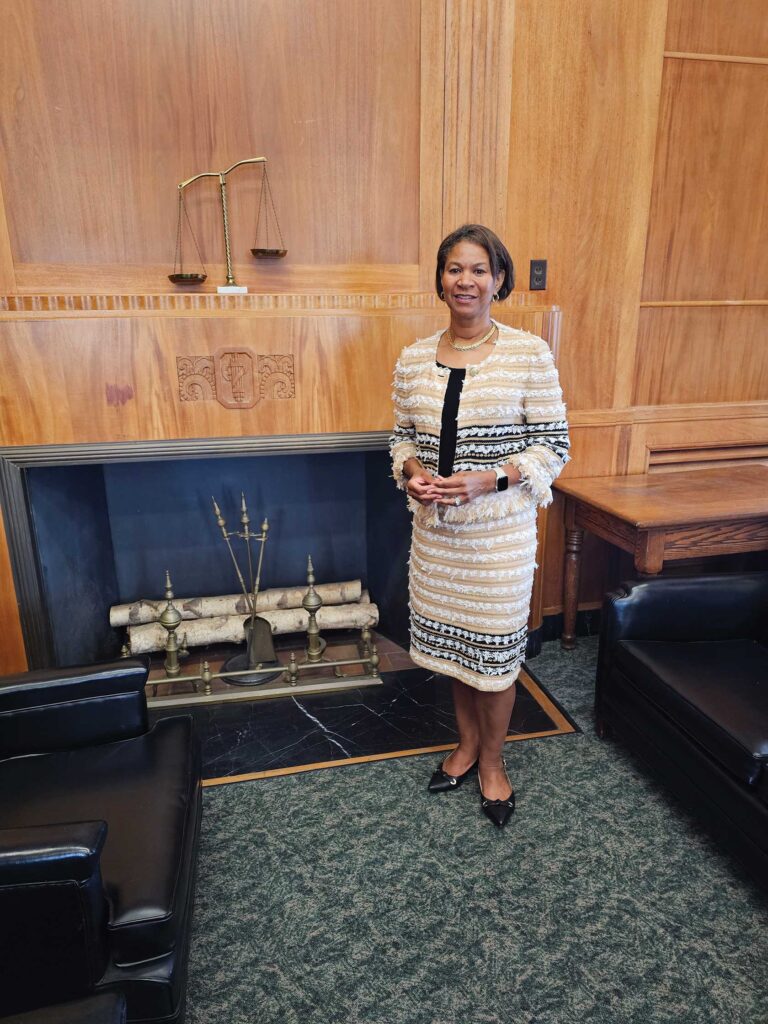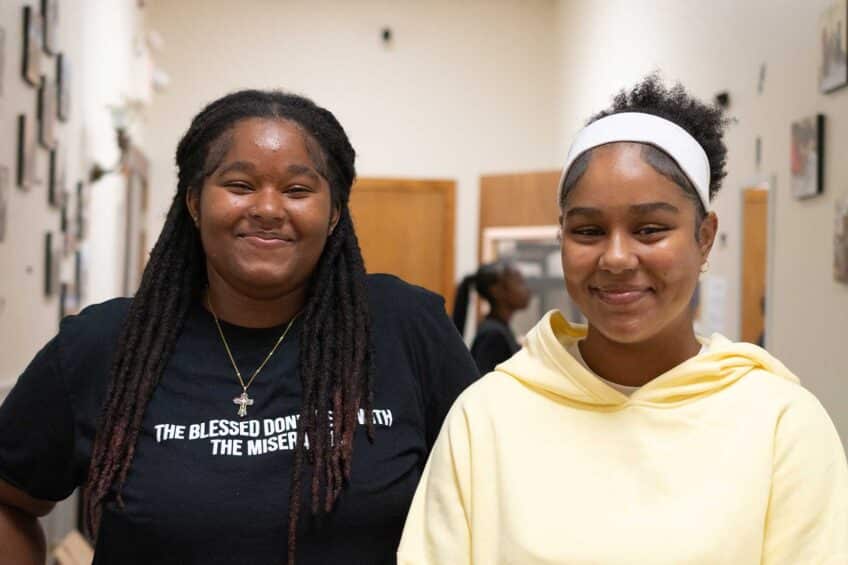
Chief Justice Kimberly Budd never saw being a justice of the Massachusetts Superior Court, let alone chief justice of the Supreme Judicial Court of Massachusetts, as something that was in the cards for her. But when duty called, she answered.
“I was sort of thrust into this. I didn’t plan for it. And I had really big shoes to fill and I was very clear about the fact that I was not going to be able to do all that my predecessor had done,” she said.
Budd filled the chief justice vacancy after the death of former Chief Justice Ralph Gants, her mentor and friend, in September 2020.
Budd said she learned a lot from Gants, especially around criminal and racial justice.
“He was very interested in criminal and racial justice, and as a white man, that was huge to have such an ally,” the former U.S. attorney said.
Inspired by her mentor and her role as a mother of two boys, Budd has been a major champion for restorative justice in the state of Massachusetts.
“One of the things that I decided I wanted to focus on was restorative justice,” she said. “I figure that will help with some of the sentencing disparities. We’re getting ready to have some pilot programs in Suffolk County and Plymouth County, and I’m hoping that will make a difference.”
The practice of restorative justice has been around for centuries, but has been picking up steam in recent times.
“Restorative justice practices are very old. It’s an indigenous tradition,” she said. “And it’s important to me, because as a mother of two boys, I know what it’s like to say, ‘You have to understand what you’ve done. You can’t do this, and here’s why.’ And so that’s what restorative justice is about.”
To make restorative justice work takes a lot of moving parts. They say it takes a village to raise a child, but it also takes a village to perform restorative justice. The process take cooperation from the offender, the victim, prosecutors, defense attorneys, judges and more.
“Half of it is making sure that the offender understands the harm that he or she has caused. And it’s also important for the victim to understand that the person who has committed the crime understands what harm they have caused that person. In our court system now, we all tell the defendant, ‘You don’t have to speak, you don’t have to say anything.’ And the victim doesn’t have a whole lot of say in what happens,” Budd said.
Restorative justice falls in line with Budd’s belief that good communication can really solve a lot of problems.
Recently, during a commencement address, she shared with Suffolk University College of Arts & Sciences graduates the importance of being open to the opinion of others.
“It’s really important to be able to put yourself in somebody else’s shoes and see it from their perspective and be open to that. And that’s something we do together in the consultation room. We’re open to hearing what somebody else’s thoughts are about the case, and so I may be persuaded by somebody I didn’t agree with at the beginning, or vice versa. And to be open to that is huge. If you were standing in your spot and saying ‘I’m not moving,’ … it’s more about whether or not you’re moving and not about whether we get to the right answer,” Budd shared.
After practicing law for over 30 years, there’s not much that surprises Budd. She is struck by how glad people are to see her around the courthouse.
“It’s nice to know that they are happy that I’ve come. They all seem so dedicated, and that’s really what makes our court system what it is,” she said.
Her presence is especially noticed by those in her courtroom, who may not be used to seeing a Black person on the bench.
“When I became a trial court judge, it was obvious that it might be just me and the defendant who are of color, and everybody else was not. I understand they’re in a tough spot. They’re having a tough time, but at least they see somebody who looks like them. I think that made a difference. Obviously, I tried to treat everybody with respect, and make sure they know that their case is important, but it’s also nice just to have that representation,” she said.






